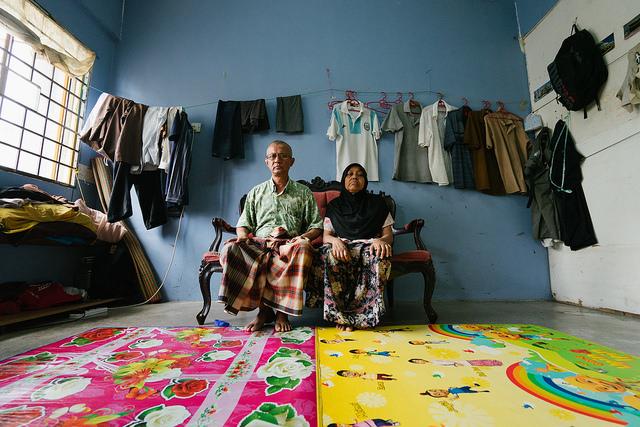Realising the full potential of the Bali Process
Posted By Matt Boyce, Nicolas di Leonardo, Brian Evans, Nicolaus Heun, Sonya Lebowitz, Sander Matthews and Michael Rich on July 2, 2015 @ 14:30
 [1]
[1]The Asia Pacific region is in the midst of the most recent wave of massive migration, with oppressed Rohingya Muslim minorities from Myanmar seeking resettlement in Malaysia. In May, it was thought that up to 6,000 migrants were abandoned by people smugglers and stranded on overcrowded boats in the Straits of Malacca. As the traditional forum for addressing such mass migration events, the ‘Bali Process [2]’ has been unable to energise member states sufficiently to stem the flow of people, rescue survivors, care for refugees, or determine the future disposition of the migrants. After 13 years and millions of dollars in funding, primarily provided by Australia, the United States, Japan and New Zealand, it’s clear that the Bali Process as currently applied is ineffective and change is required.
In response to the latest crisis, the Thai Government hosted a ‘Special Meeting on Irregular Migration in the Indian Ocean’ on 29 May 2015. During the meeting the United Nations High Commissioner on Refugees (UNHCR) called for [3] ‘innovative solutions to the complex problem and to ensure assistance for those in need of protection.’
The Bali Process was inaugurated by Australia and Indonesia in 2002 as a coalition of 50 willing states and agencies to respond to the growing scale and complexity of illegal mass migration in the region. The coalition is best described as a ‘regional consultative process’ that aspires to develop cooperative policy, share intelligence, enhance police cooperation, criminalise and prosecute people smugglers and traffickers, share best practices, and focus on addressing the root causes of illegal immigration. In 2012, the Regional Support Office (RSO) [4] of the Bali Process was opened to ‘operationalize the regional cooperation framework;’ it’s ‘the only cooperation mechanism of its kind in the region’. Unfortunately, in the absence of treaty authority and assigned military and police forces, the RSO simply provides facilities and funding to ensure constant communication between participating parties.
Combined Joint Interagency Task Force – Pacific
Mass migration events in the Asia Pacific are historically triggered by a multitude of events and may occur with little to no warning with catastrophic human security implications. In the context of these varied triggers, the Bali Process RSO has three pressing capability gaps in their ‘detection-to-response’ cycle for mass migration events. They lack:
- A live fusion centre for aggregation of member state sensor and intelligence data necessary to monitor mass migration triggers,
- The expertise and capacity in multinational, interagency, intergovernmental/nongovernmental planning for mass migration events.
- A unified structure for coordinating multinational and nongovernmental response to mass migration events.
A potential solution to address these capability gaps is a Combined Joint Interagency Coordination Group (CJIACG) permanently established within the RSO. This CJIACG would have the ability to rapidly transition into a Combined Joint Interagency Task Force (CJIATF) in the event of a migration crisis.
While recognising that deep concerns over sovereignty and permanent disposition of refugees remain delicate issues, the most pressing human and national security concerns necessitate a coordinated and transparent response. At the same time, transnational criminal organisations exploiting the chaos through the smuggling and/or trafficking of persons must be quickly and systematically eliminated. CJIACGs have shown historic success as employed by US Pacific Command to liaise with domestic interagency, foreign military, and intergovernmental/nongovernmental organisations. US Pacific Command (PACOM) has effectively employed CJIACGs to facilitate humanitarian assistance, disaster relief and counter-transnational organised crime information sharing. In the case of mass migration events, CJIACGs could host open access watch floors to track indicators and warnings of potential triggers and determine when an event is imminent, allowing the CJIATF to quickly assume responsibility for response operations.
The application of the CJIATF construct in PACOM (CJIATF-PAC) is conceptually derived in form and function from US Southern Command’s Joint Interagency Task Force (JIATF) – South [5]. JIATF – South is an exemplar of effective whole-of-government, international, intergovernmental/nongovernmental organisation coordination and integration to address narcotic smuggling, human trafficking, and other transnational criminal activity. The organisation of a CJIATF allows for the integration of capabilities and authorities unique to member states and their respective military and civilian agencies.
If the scope of CJIACG-PAC and JIATF-PAC responsibilities and authorities is limited to the rescue, relief and security of migrants, it’s likely that a broad array of nontraditional partners would be willing to participate and contribute. Revising the Bali Process to unite participating nations under a single CJIACG for planning and CJIATF for operations would significantly increase the capacity and capability required to effectively respond to current and future mass migration events in the Asia Pacific region.
This article is based on a research case study developed by Professor Lieutenant Colonel Tom Linn’s Theater Security Decision Making students of the United States Naval War College.
Article printed from The Strategist: https://aspistrategist.ru
URL to article: /realising-the-full-potential-of-the-bali-process/
URLs in this post:
[1] Image: https://aspistrategist.ru/wp-content/uploads/2015/07/18765655479_4102a45895_z.jpg
[2] Bali Process: http://www.baliprocess.net/
[3] called for: http://www.mfa.go.th/main/en/media-center/14/56880-Summary-Special-Meeting-on-Irregular-Migration-in.html
[4] Regional Support Office (RSO): http://www.baliprocess.net/regional-support-office
[5] Joint Interagency Task Force (JIATF) – South: http://www.jiatfs.southcom.mil/
Click here to print.